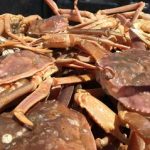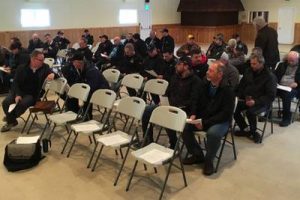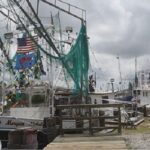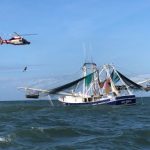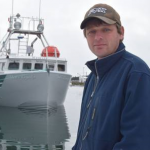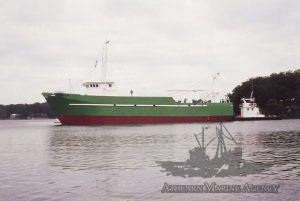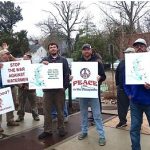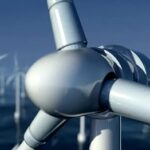Tag Archives: bycatch
Opinion: State, council fail to help Kodiak trawl fisheries
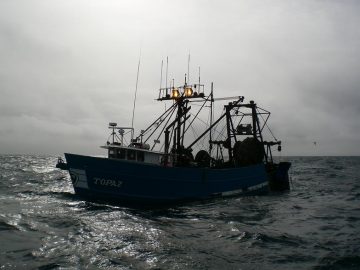 The North Pacific Fishery Management Council has a record for successful fishery management, built on principles known as the Alaska Model. Recently, the council abandoned the Alaska Model and its solid reputation for progressive fishery management. In doing so, the council failed the Gulf of Alaska trawl groundfish fisheries and our community of Kodiak. Led by the state of Alaska, the council voted at its December meeting in Anchorage to “postpone indefinitely” any further work to address the goal of bycatch reduction through a cooperative management program for Gulf of Alaska trawl fisheries. Instead, the Council ended a four-year public process to develop a program to achieve this goal. By their action, the state and the council put politics first, and the health of our fisheries and coastal communities came in dead last. Read the op-ed here 17:46
The North Pacific Fishery Management Council has a record for successful fishery management, built on principles known as the Alaska Model. Recently, the council abandoned the Alaska Model and its solid reputation for progressive fishery management. In doing so, the council failed the Gulf of Alaska trawl groundfish fisheries and our community of Kodiak. Led by the state of Alaska, the council voted at its December meeting in Anchorage to “postpone indefinitely” any further work to address the goal of bycatch reduction through a cooperative management program for Gulf of Alaska trawl fisheries. Instead, the Council ended a four-year public process to develop a program to achieve this goal. By their action, the state and the council put politics first, and the health of our fisheries and coastal communities came in dead last. Read the op-ed here 17:46
Gulf of Carpentaria trawl operators on track to cut bycatch by one third with new prawn net devices
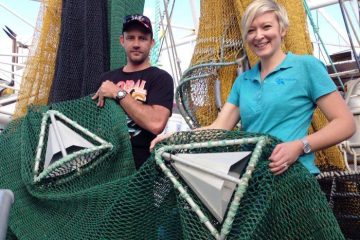 Trawler operators in the Gulf of Carpentaria believe they’re on track to achieving an ambitious target of cutting bycatch by 30 per cent in three years. The northern prawn fishery’s been offering cash incentives to promote and develop new ideas for limiting the amount of non-target species caught in prawn nets. Trawler skipper Jamie Ball admitted he was worried at first about potential prawn losses when trialling a new bycatch reduction device on board his fishing vessel, Xanadu. But after measuring and comparing catches in separate nets over a two-week period, the skipper and his crew were convinced the industry was on a winner. “I was a bit hesitant ’cause I thought ‘oh well is it losing prawn as well?” Read the story here 13:34
Trawler operators in the Gulf of Carpentaria believe they’re on track to achieving an ambitious target of cutting bycatch by 30 per cent in three years. The northern prawn fishery’s been offering cash incentives to promote and develop new ideas for limiting the amount of non-target species caught in prawn nets. Trawler skipper Jamie Ball admitted he was worried at first about potential prawn losses when trialling a new bycatch reduction device on board his fishing vessel, Xanadu. But after measuring and comparing catches in separate nets over a two-week period, the skipper and his crew were convinced the industry was on a winner. “I was a bit hesitant ’cause I thought ‘oh well is it losing prawn as well?” Read the story here 13:34
Their proposal would hurt North Carolinians – Jerry Schill, President, North Carolina Fisheries Association
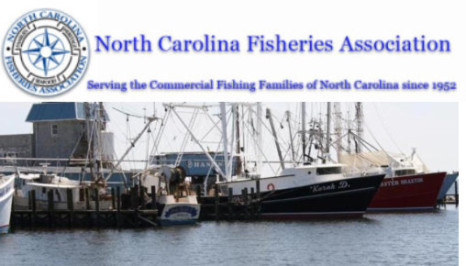 In response to a letter to the editor, “Thoughts on marine fisheries,” Wednesday, March 16, I offer the following comments. It should be noted that the Kinston authors sent the letter to several media outlets. On the subject of shrimp trawling, the writers fail to acknowledge the many studies done by researchers over the years that have documented bycatch associated with this fishery and that despite decades of trawling, overall benthic productivity is dramatically increased. They also ignore the efforts by commercial fishermen to work proactively to reduce bycatch. Those studies began in the late 1980s and resulted with bycatch reduction devices in shrimp trawls. Currently, even though North Carolina is ahead of federal requirements to reduce bycatch, there is cooperative research ongoing to reduce it even further. Read the rest here 10:11
In response to a letter to the editor, “Thoughts on marine fisheries,” Wednesday, March 16, I offer the following comments. It should be noted that the Kinston authors sent the letter to several media outlets. On the subject of shrimp trawling, the writers fail to acknowledge the many studies done by researchers over the years that have documented bycatch associated with this fishery and that despite decades of trawling, overall benthic productivity is dramatically increased. They also ignore the efforts by commercial fishermen to work proactively to reduce bycatch. Those studies began in the late 1980s and resulted with bycatch reduction devices in shrimp trawls. Currently, even though North Carolina is ahead of federal requirements to reduce bycatch, there is cooperative research ongoing to reduce it even further. Read the rest here 10:11
Your Definition of Bycatch is Most Likely Incorrect
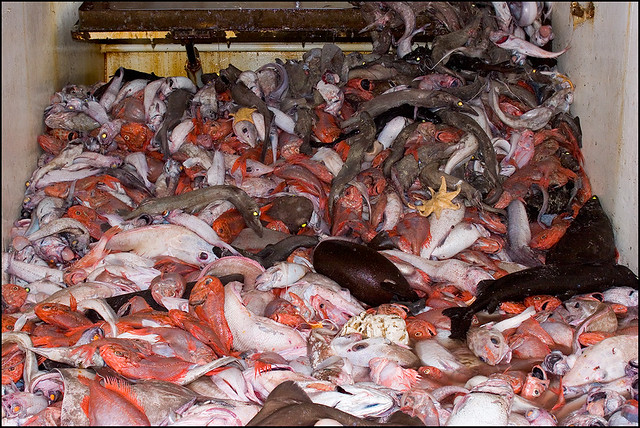 So why is this important? One reason it’s important is because when the world’s largest ocean conservation organization does not understand what bycatch even is, then we have a very big problem. When ocean conservation organizations do not understand what bycatch is, it can lead to scientifically flawed statistics published in reports such as “Wasted Catch” which only amplify the confusion by spreading misinformation about responsible U.S. fisheries to the mass general public. Read the rest here 16:59
So why is this important? One reason it’s important is because when the world’s largest ocean conservation organization does not understand what bycatch even is, then we have a very big problem. When ocean conservation organizations do not understand what bycatch is, it can lead to scientifically flawed statistics published in reports such as “Wasted Catch” which only amplify the confusion by spreading misinformation about responsible U.S. fisheries to the mass general public. Read the rest here 16:59
Alaska flatfish catchers take hit after NPFMC bycatch vote
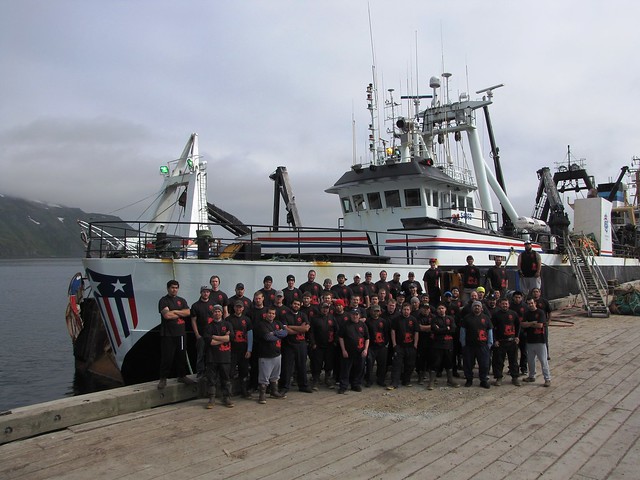 “We are not happy. This is a huge, huge cut,” Chris Woodley, executive director of the Groundfish Forum in Seattle, Wash. “We have already taken a 20 percent cut in the last seven years and now this is a 25 percent reduction.” The Groundfish Forum estimates USD 30 million (EUR 26.6 million) to USD 50 million (EUR 44.3 million) in losses to catchers-processors of Pacific cod, sole, Atka mackerel and other flatfish because of the reduction. Read the rest here 21:24
“We are not happy. This is a huge, huge cut,” Chris Woodley, executive director of the Groundfish Forum in Seattle, Wash. “We have already taken a 20 percent cut in the last seven years and now this is a 25 percent reduction.” The Groundfish Forum estimates USD 30 million (EUR 26.6 million) to USD 50 million (EUR 44.3 million) in losses to catchers-processors of Pacific cod, sole, Atka mackerel and other flatfish because of the reduction. Read the rest here 21:24
Guest Opinion: State needs to push for halibut protection – by John L. Beath
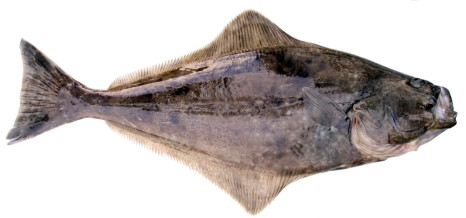 The Pacific halibut may be an icon of our region, but over the past 10 years in the Bering Sea, it’s become increasingly obvious that we aren’t doing as good a job of protecting them as we should. A total of 62.6 million pounds of halibut were caught as bycatch, harvested unintentionally and thrown overboard dead. To compare, the hook-and-line fishermen targeting halibut only caught 69.7 million pounds in the same area over the same period of time. Read the rest here 10:52
The Pacific halibut may be an icon of our region, but over the past 10 years in the Bering Sea, it’s become increasingly obvious that we aren’t doing as good a job of protecting them as we should. A total of 62.6 million pounds of halibut were caught as bycatch, harvested unintentionally and thrown overboard dead. To compare, the hook-and-line fishermen targeting halibut only caught 69.7 million pounds in the same area over the same period of time. Read the rest here 10:52
David Bayes: Major bycatch reduction essential to halibut fishery
 In recent seasons, halibut users across the state have been tightening their belts. Biologists tell us that, though the total number of halibut in Alaska’s waters is at a very sustainable rate, those halibut are now growing more slowly than usual. Since halibut are regulated based upon the “total number of pounds in the sea,” rather than “total number of fish in the sea,” the longline and charter fleets are facing allocation cutbacks. Read the rest here 16:27
In recent seasons, halibut users across the state have been tightening their belts. Biologists tell us that, though the total number of halibut in Alaska’s waters is at a very sustainable rate, those halibut are now growing more slowly than usual. Since halibut are regulated based upon the “total number of pounds in the sea,” rather than “total number of fish in the sea,” the longline and charter fleets are facing allocation cutbacks. Read the rest here 16:27
Canada-U.S. delegates meet in B.C. to discuss halibut ‘wastage’ in Bering Sea
 You might say it’s a story about the fish that didn’t get away. Fishermen in the Bering Sea off the coast of Alaska are tossing back millions of kilograms of dead halibut they’ve caught unintentionally while scooping up other stocks. The longtime practice, known as bycatch, has become the focus of intense scrutiny in Alaska and will be the subject of debate at a meeting at month’s end of the International Pacific Halibut Commission in Vancouver. Read the rest here 11:13
You might say it’s a story about the fish that didn’t get away. Fishermen in the Bering Sea off the coast of Alaska are tossing back millions of kilograms of dead halibut they’ve caught unintentionally while scooping up other stocks. The longtime practice, known as bycatch, has become the focus of intense scrutiny in Alaska and will be the subject of debate at a meeting at month’s end of the International Pacific Halibut Commission in Vancouver. Read the rest here 11:13
Pitted against the hook-and-line halibut fleet are 16 Bering Sea trawlers – Conflict threatens to close Bering Sea halibut fishery
 Those likely to suffer include fishing crews from Alaska to Oregon and vessel owners who invested in the halibut haul after it was privatized in 1995 in a failed bid to stabilize the fish stock. Perhaps more severely threatened are Aleut villages of western Alaska that rely on halibut for both cash and sustenance. The trouble stems from more than a decade of declines in halibut stocks targeted by fishing vessels that use long lines of baited hooks to reel in the popular fish. Read the rest here 17:33
Those likely to suffer include fishing crews from Alaska to Oregon and vessel owners who invested in the halibut haul after it was privatized in 1995 in a failed bid to stabilize the fish stock. Perhaps more severely threatened are Aleut villages of western Alaska that rely on halibut for both cash and sustenance. The trouble stems from more than a decade of declines in halibut stocks targeted by fishing vessels that use long lines of baited hooks to reel in the popular fish. Read the rest here 17:33
My Turn: It’s time for trawlers to pay their fair share – Pete Wedin, F/V Julia Lynn, Homer, AK
 In short, in 2012, after 20 years of unchanged halibut bycatch limits for the Gulf of Alaska trawl fisheries, the North Pacific Fishery Management Council took action to reduce the halibut bycatch limit by 15 percent, to be phased in over three years.,,, At the end of the day, despite the council’s best efforts, thousands of kings and millions of pounds of halibut continue to be taken from the . This is wasted resource. Read the rest here 09:03
In short, in 2012, after 20 years of unchanged halibut bycatch limits for the Gulf of Alaska trawl fisheries, the North Pacific Fishery Management Council took action to reduce the halibut bycatch limit by 15 percent, to be phased in over three years.,,, At the end of the day, despite the council’s best efforts, thousands of kings and millions of pounds of halibut continue to be taken from the . This is wasted resource. Read the rest here 09:03
Pound Net Watermen Prepare for Menhaden Bycatch Limits
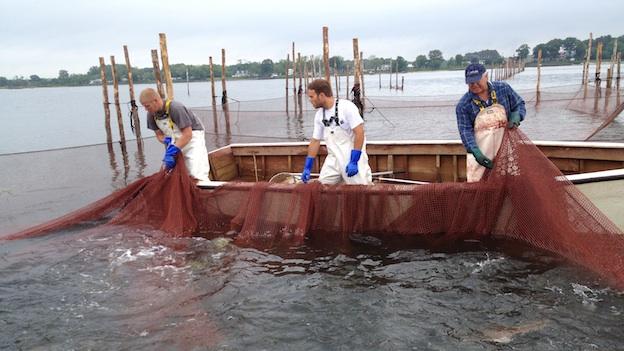 Today, a Maryland waterman with a pound net can catch as many menhaden as he or she would like, on Friday, that gets cut back to 6,000 pounds a day to protect the species from overfishing, Video, and Read more here 12:26
Today, a Maryland waterman with a pound net can catch as many menhaden as he or she would like, on Friday, that gets cut back to 6,000 pounds a day to protect the species from overfishing, Video, and Read more here 12:26
Joe Macinko spanks Eric Olson: Fishery council chair’s response to bycatch criticism snagged bottom
 The outgoing chairman of the North Pacific Fishery Management Council, Eric Olson, has responded to my commentary “Canada’s trawlers drastically cut bycatch, why can’t Alaska’s?” In his response, he says I have ignored all the good work done by the council in the way of bycatch reduction. Rather than refute my claims, several of the statements, misdirections and omissions he makes serve to illustrate my points. Read it here 14:46
The outgoing chairman of the North Pacific Fishery Management Council, Eric Olson, has responded to my commentary “Canada’s trawlers drastically cut bycatch, why can’t Alaska’s?” In his response, he says I have ignored all the good work done by the council in the way of bycatch reduction. Rather than refute my claims, several of the statements, misdirections and omissions he makes serve to illustrate my points. Read it here 14:46
Canada’s trawlers drastically cut bycatch, why can’t Alaska’s?
 Sometimes there’s big money to be made prolonging a problem. One short sentence sums up nearly 20 years of work by the North Pacific Fisheries Management Council on trawl bycatch. During the February 1997 meeting of the NPFMC a representative from the Canadian Department of Fisheries and Oceans gave a presentation on how that country reduced trawl bycatch while catching ALL of its trawl quota. Read more here 18:00
Sometimes there’s big money to be made prolonging a problem. One short sentence sums up nearly 20 years of work by the North Pacific Fisheries Management Council on trawl bycatch. During the February 1997 meeting of the NPFMC a representative from the Canadian Department of Fisheries and Oceans gave a presentation on how that country reduced trawl bycatch while catching ALL of its trawl quota. Read more here 18:00
Letter From the Editor: ‘Our Fish’
I picked an inopportune moment to ask the top guy for the U.S fisheries industry for a little education on his business. He was among 350-400 participants from 80 nations around the world who were attending Secretary of State John Kerry’s “Our Ocean” Conference in Washington, D.C., last week. Read more here 10:50
Oceana’s Bycatch Report and Media Coverage Ignores Key Successes in U.S. Fisheries
 Environmental special interest group Oceana made headlines last March with its bycatch report, “Wasted Catch: Unsolved Problems in U.S. Fisheries.” Since the report’s release, mainstream media publications and other environmental organizations, like the Pew Charitable Trusts, have further presented one-sided coverage of issues regarding bycatch in the United States — often providing little or no information about the significant and successful efforts taken by many commercial fisheries to curb unintended catch. These omissions of facts are misleading, ultimately providing the public a skewed perspective on U.S. fisheries management. Read more here 14:53
Environmental special interest group Oceana made headlines last March with its bycatch report, “Wasted Catch: Unsolved Problems in U.S. Fisheries.” Since the report’s release, mainstream media publications and other environmental organizations, like the Pew Charitable Trusts, have further presented one-sided coverage of issues regarding bycatch in the United States — often providing little or no information about the significant and successful efforts taken by many commercial fisheries to curb unintended catch. These omissions of facts are misleading, ultimately providing the public a skewed perspective on U.S. fisheries management. Read more here 14:53
Bycatch symposium underway
 The most common bycatch topics in Alaska — salmon caught by the Bering Sea boats targeting pollock, and halibut caught by Alaska trawlers — were on the table at a fisheries symposium today. Scientists, industry representatives and others interested in fisheries science, management and policy are discussing everything bycatch at the Lowell Wakefield Fisheries Symposium, which runs through Thursday at the Hilton Hotel in Downtown Anchorage. Read more here 17:52
The most common bycatch topics in Alaska — salmon caught by the Bering Sea boats targeting pollock, and halibut caught by Alaska trawlers — were on the table at a fisheries symposium today. Scientists, industry representatives and others interested in fisheries science, management and policy are discussing everything bycatch at the Lowell Wakefield Fisheries Symposium, which runs through Thursday at the Hilton Hotel in Downtown Anchorage. Read more here 17:52
The End of the U.S. Shrimping Industry – Execution by Electrocution? Public comments end 3/31/14
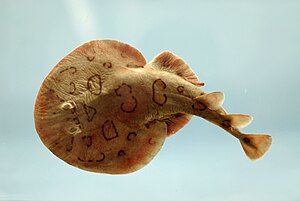 In 2010, WildEarth Guardians petitioned the National Marine Fisheries Service (NMFS) to list the lesser electric ray (also commonly called the Caribbean electric ray) under the ESA, but that petition was denied in a 90-day finding in March 2011. If the lesser electric ray is listed under the ESA, it could mean the end of shrimp fishing as we know it throughout the ray’s range, which includes all the Gulf states, as well as states along the east coast from Florida to North Carolina. Read more here thegoodcatchblog 23:17
In 2010, WildEarth Guardians petitioned the National Marine Fisheries Service (NMFS) to list the lesser electric ray (also commonly called the Caribbean electric ray) under the ESA, but that petition was denied in a 90-day finding in March 2011. If the lesser electric ray is listed under the ESA, it could mean the end of shrimp fishing as we know it throughout the ray’s range, which includes all the Gulf states, as well as states along the east coast from Florida to North Carolina. Read more here thegoodcatchblog 23:17
Report cites threat from fish ‘bycatch’ to ecosystems, including waters off R.I.
 Among what it (Oceana “Wasted Catch,”) calls the nation’s “nine dirty fisheries” are three off Rhode Island: Northeast bottom trawling (groundfish, whiting), mid-Atlantic bottom trawling (scup, flounder, sea bass), and New England/mid-Atlantic gillnetters (monkfish, groundfish, skates). In trawling, nets are towed through the water, while gillnets are set and anchored. Read more here 08:03
Among what it (Oceana “Wasted Catch,”) calls the nation’s “nine dirty fisheries” are three off Rhode Island: Northeast bottom trawling (groundfish, whiting), mid-Atlantic bottom trawling (scup, flounder, sea bass), and New England/mid-Atlantic gillnetters (monkfish, groundfish, skates). In trawling, nets are towed through the water, while gillnets are set and anchored. Read more here 08:03
TRUTH: Fishing Crisis or Government Mismanagement – Watch here
Call the king salmon taken by Cook Inlet setnetters what it is: bycatch
 What is bycatch? Here is the generally accepted definition of the term that first began popping up in common usage in the late 1990s: more@alaskadispatch 13:38
What is bycatch? Here is the generally accepted definition of the term that first began popping up in common usage in the late 1990s: more@alaskadispatch 13:38
Seattle Based Organization SeaShare Helps Feed Alaska’s Hungry – video
New device may keep halibut from bottom trawlers
In a series of tests off the Washington coast, commercial fishermen used a “flexible sorting grid excluder” to reduce the number of halibut taken as bycatch by 57 percent, while retaining 84 percent of the targeted groundfish, according to Mark Lomeli of the Pacific States Marine Fisheries Commission. continued






 There are calls for the Federal Government to develop a long-term strategy to protect threatened marine species from commercial fishing. Every year thousands of protected species are killed as bycatch. The Australian Fisheries Management Authority (AFMA) publishes a quarterly report detailing how many protected species have been killed in Commonwealth waters. The Australian Marine Conservation Society’s Tooni Mahto said the numbers were unacceptable. (but they never are, eh Tooni?) Meanwhile, In the Small Pelagic Fishery,,,
There are calls for the Federal Government to develop a long-term strategy to protect threatened marine species from commercial fishing. Every year thousands of protected species are killed as bycatch. The Australian Fisheries Management Authority (AFMA) publishes a quarterly report detailing how many protected species have been killed in Commonwealth waters. The Australian Marine Conservation Society’s Tooni Mahto said the numbers were unacceptable. (but they never are, eh Tooni?) Meanwhile, In the Small Pelagic Fishery,,,  For years, poor king salmon returns have forced the closures of subsistence, commercial and
For years, poor king salmon returns have forced the closures of subsistence, commercial and 

























